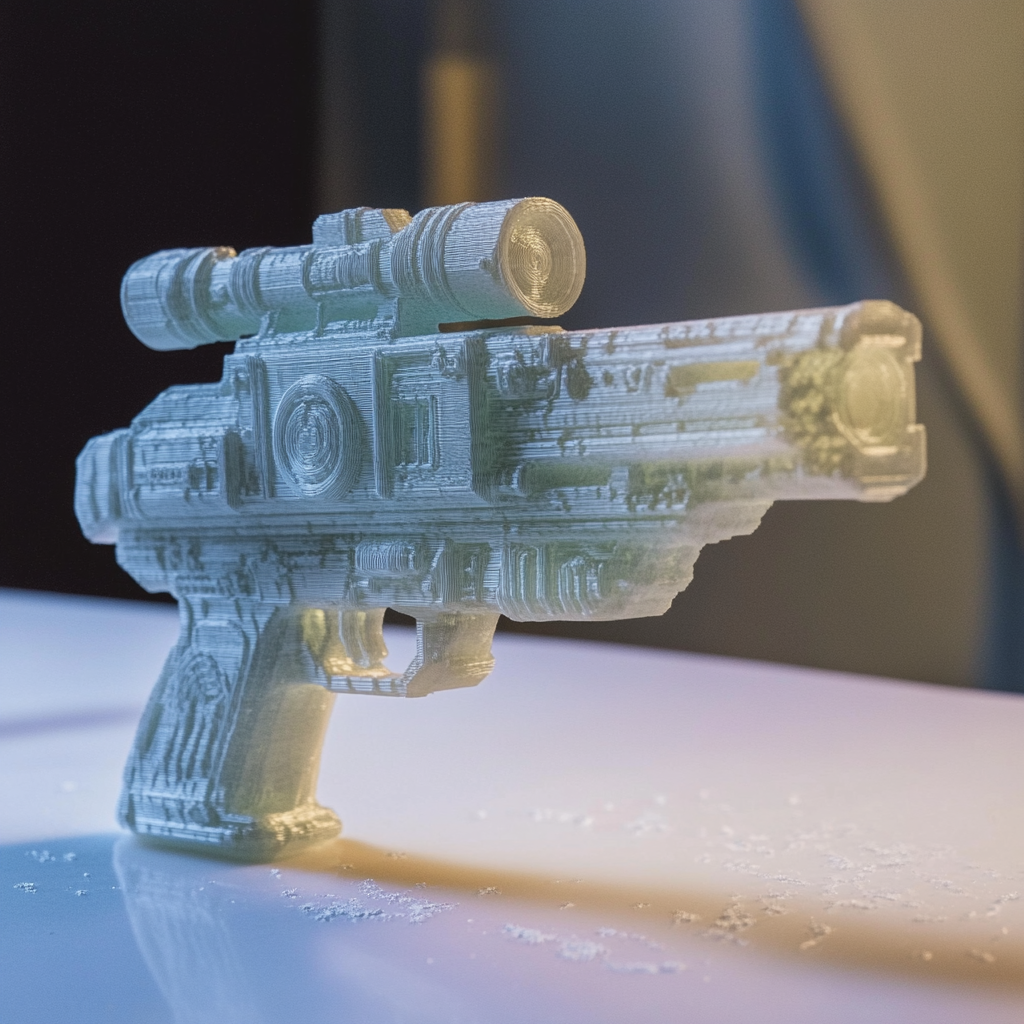Resin vs FDM Printing for Cosplay
Cosplay enthusiasts often face the decision of choosing between resin and FDM printing to create detailed costume pieces. Each 3D printing method offers unique advantages and limitations that can significantly affect the quality, durability, and aesthetics of your cosplay designs. In this article, you will discover the strengths and weaknesses of both techniques, helping you make an informed choice for your next cosplay project. Whether you’re aiming for intricate designs or robust parts, understanding these methods is key to elevating your cosplay experience.
Overview of 3D Printing Technologies
As a cosplay enthusiast, choosing the right 3D printing technology can significantly impact the quality and durability of your costume pieces. Two popular methods, resin and FDM printing, each offer unique advantages and drawbacks, making them suitable for different applications in the cosplay realm. Understanding these technologies will help you make informed decisions tailored to your cosplay needs.
What is Resin Printing?
After mixing two chemicals, resin printing uses a process called photopolymerization to create detailed parts by curing liquid resin layer by layer. This technique is known for producing highly accurate and intricate designs, making it particularly valuable for fine details in cosplay accessories such as helmets and armor. You’ll appreciate the seamless surfaces and the precision that resin printing brings to your costumes.
What is FDM Printing?
Alongside resin printing, FDM (Fused Deposition Modeling) printing is another popular method, utilizing a thermoplastic filament that is melted and extruded to build up layers. This technique is generally faster and more cost-effective, making it an appealing option for larger cosplay pieces where strength and durability are crucial.
But while FDM printing can create robust parts with higher tensile strength ranging from 38-64 MPa, it has limitations in detail resolution compared to resin printing. Unlike resin printers, FDM printers tend to produce surface roughness due to their layer height, which typically ranges from 50 to 400 microns. For cosplays requiring structural integrity, like weapons or large base structures, FDM prints serve well. However, if you’re after detailed accessories, utilizing a combination of both technologies may yield the best results for your cosplay projects.

Strength and Durability Comparison
Now, when it comes to creating cosplay pieces, understanding the strength and durability of your materials is imperative. Both resin and FDM printing methods have unique strengths that can affect the quality and longevity of your costumes. Below is a comparison of their properties:
| Property | FDM Printing |
|---|---|
| Tensile Strength | 38-64 MPa |
| Flexural Strength | 2.1-7.6 GPa |
| Elongation at Break | 3.5-50% |
| Density | 1.0-1.4 g/cm³ |
Tensile Strength of Resin vs FDM
After reviewing the tensile strength values, you will find that FDM prints typically range from 38 to 64 MPa, outperforming resins, which average between 23 and 55 MPa. For your cosplay projects, this means FDM is often the better option for heavier-duty pieces that may need to endure wear and tear.
Flexural Strength Considerations
Behind flexibility and durability, the flexural strength of your printed materials significantly influences the overall quality of your cosplay pieces. FDM prints boast higher flexural strengths, ranging from 2.1 to 7.6 GPa, compared to the 60.6 MPa average for resin prints. This means that if your cosplay includes components subjected to bending or stress, FDM printing will provide more reliable support.
Also, consider that while resin can achieve finer details and smoother finishes, its lower flexural strength could lead to brittleness in intricate designs. Depending on your design needs, incorporating FDM printing for structural elements and resin for detailed features could provide a balanced approach for optimal cosplay creations.
Detail and Resolution Capabilities
Clearly, when it comes to cosplay, the accuracy of your prints can significantly impact the final look of your costumes. The detail and resolution capabilities of each printing method play a vital role in achieving the intricate designs often required for character replicas. While FDM printing has its advantages, resin printing generally offers greater precision, making it ideal for capturing fine details in cosplay pieces.
Surface Finish and Detail in Resin Prints
Beside precision, resin prints provide an exceptional surface finish, perfect for the intricate detailing that cosplay fans desire. Because resin printing operates on photopolymerization, it allows for a smoother texture and finer features, ensuring that even the tiniest details of your cosplay costume come out looking sharp, rather than rough or uneven.
Resolution Limitations of FDM Prints
An important consideration for your cosplay project is the resolution limitations of FDM prints. While FDM printers can produce sturdy parts, they generally operate within a resolution range of 50-400 microns. This may lead to visible layer lines and less detailed surfaces compared to resin prints, making it challenging to replicate the smooth finishes often necessary in costume creation.
At the lower end of FDM’s resolution spectrum, prints can show a noticeable roughness that detracts from the quality of your cosplay. If you rely solely on FDM for intricate designs, you might have to invest additional time in sanding and finishing techniques to achieve the desired aesthetic, ultimately affecting your project timeline. Conversely, using resin printing when creating detailed cosplay props can save you time and offer a professional finish out of the printer, enhancing the overall look of your character.
Cost Analysis and Accessibility
Despite the charm of advanced technology, the cost factor can significantly influence your choice between resin and FDM prints for cosplay. FDM printing generally boasts a lower entry price point, making it more accessible for enthusiasts on a budget. However, resin printing can offer unparalleled detail and accuracy, often deemed worth the higher price for intricate projects.
Initial Investment for Resin vs FDM
With FDM printers typically priced between $200 and $800, you can enter the 3D printing world without breaking the bank. In contrast, resin printers often start around $300 but can exceed $1,000, necessitating a more substantial initial investment for precise and high-resolution prints that are beneficial for cosplay.
Material Costs and Availability
Between resin and FDM materials, the cost and availability vary. FDM filament generally ranges from $20 to $50 per kilogram, with a wide selection available online and at local stores, making it an economical choice for larger cosplay pieces. Meanwhile, resin can cost anywhere from $50 to $150 per liter, often with fewer local options but more specialized vendors offering unique types.
The demand for specific materials for cosplay can also affect your choice. While FDM filaments are conveniently stocked due to their popularity, resin options can be harder to source, often requiring you to wait for shipping from niche suppliers. If you’re planning larger projects and prefer cost-effective methods, FDM may be your best bet, whereas resin is a compelling option for detailed cosplay elements that benefit from superior precision.
Application Suitability for Cosplay
To determine the best method for your cosplay pieces, consider how each printing technique meets your specific needs. FDM prints offer strength and durability, making them ideal for larger, less detailed components, while resin printing excels in producing intricate and highly detailed parts. For an in-depth comparison, you might explore Resin vs PLA – Costumes & Props • General. Ultimately, the choice should align with the complexity and wear requirements of your costume.
Best Practices for Resin in Cosplay
Behind every successful resin print is careful planning and preparation. When using resin for cosplay, ensure that you properly set up your workspace and invest time in post-processing steps such as washing and curing. This not only enhances the printed piece’s durability but also contributes to achieving a polished finish, which is vital for high-quality cosplay costumes.
Advantages of FDM for Cosplay Props
Between the affordability and strength of FDM prints, you can create robust props without emptying your wallet. FDM machines are generally less expensive and easier to maintain than resin printers, making them a solid choice for enthusiastic cosplayers on a budget. Additionally, FDM prints are strong, with tensile strengths ranging from 38-64 MPa, giving you confidence in the durability of your finished pieces.
Plus, FDM printing processes allow for faster production times, enabling you to build multiple pieces quickly. With print settings that can be adjusted for different sizes and complexities, you can create everything from sturdy armor to playful accessories. The flexibility to choose from various filaments opens up options for achieving the colors and textures needed for your costume, enhancing your overall cosplay experience.
Post-Processing Requirements
Not all 3D printing methods require the same level of post-processing. When considering What are the differences between resin and filament … for your cosplay pieces, keep in mind that resin prints typically demand more effort. You’ll need to wash off any excess resin and perform further finishing steps to achieve a smooth and polished look.
Post-Processing Steps for Resin Prints
After printing your resin models, ensure they are fully cured by exposing them to UV light. This step eliminates any residual uncured resin. Next, wash your prints in isopropyl alcohol to remove any sticky remnants and sand the surfaces for a smoother finish, especially around intricate details.

Finishing Techniques for FDM Models
Above all, FDM prints are relatively easier to finish compared to resin prints. You can enhance FDM models by sanding down rough edges and using primer to prepare them for painting. This ensures that the surface captures the color and detail of your design perfectly, making your cosplay pieces look more professional and polished.
Steps to finish your FDM models include using progressively finer sandpaper to smooth out imperfections. Additionally, applying a heat gun can help with minor warping, allowing for better details. Once the surface is smooth, you can apply primer, followed by paints that suit your cosplay theme, enhancing the overall appearance of your costumes.
Summing up
To wrap up, when considering 3D printing for your cosplay pieces, both FDM and resin printing offer distinct advantages. FDM prints are typically stronger and faster, making them ideal for larger, more robust costume elements. However, if you seek high accuracy and fine details, particularly for intricate parts, resin printing might be the better choice despite its higher cost and additional post-processing time. Ultimately, your selection should align with the specific requirements of your cosplay design and the level of detail you wish to achieve.

